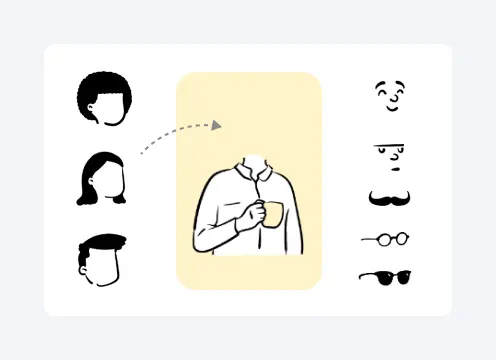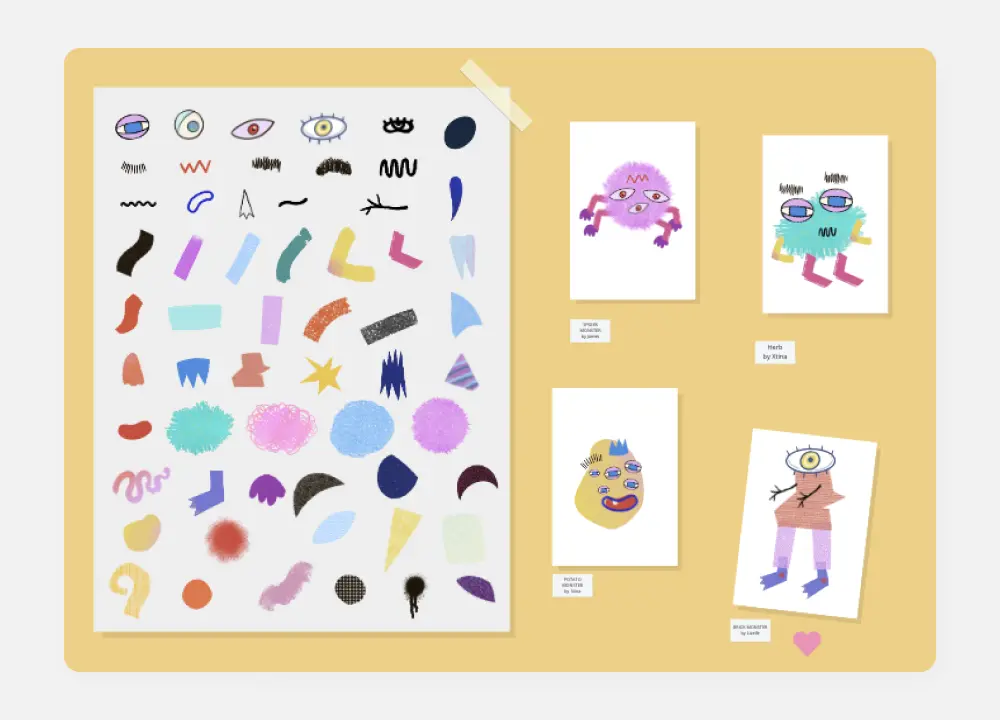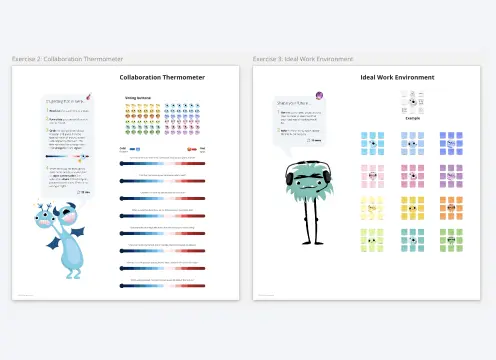This ice breaker is perfect to start a workshop or an event with many attendees.
It allows people to engage with the Miro board while introducing themselves through a drawing.
Instructions
Time: 15/20 mins
The participants are asked to introduce themselves by choosing between the drawing elements on the boards: a face shape, a hairstyle, eyes, a nose, a mouth, a beard and an accessory (optional).
They can either drag or copy and paste the elements in one of the boxes at the bottom of the whiteboard.
In the text boxes, the participants will write their name and how they are feeling about the event.
Once everyone has drawn himself, the facilitator can introduce the attendees by sharing the screen and walking through the different characters.
The participant will have fun by looking at the final drawing and comparing it to the real person.
Character Drawing Template FAQ
How do you make virtual introductions fun?
Many facilitators turn traditional introduction rounds into a fun icebreaker. Instead of asking people to introduce themselves, they get them active on the board by inviting them to complete a task that will, in the end, replace the intro round. The Character Drawing Template is a good example of how introductions can be fun and engaging, where the facilitator asks each participant to draw a caricature of themselves. Check out our Miroverse community for more fun icebreakers and introduction ideas.






